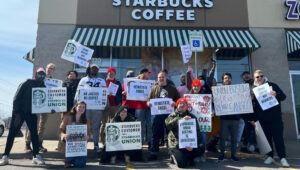As the dust clears after the collapse of Silicon Valley Bank (SVB), things are starting to look more and more suspicious to even the most sympathetic eyes. In late 2021 and early 2022, executives earned almost $27 million through open market stock sales, at a time when management may have known that the company’s financial condition was increasingly risky. This number does not include the $3.6 million in stock CEO Greg Becker sold days before the bank’s failure.
New evidence, first reported by independent analyst Michael Puangmalai, points to SVB executives and board members potentially being aware of the company’s problems but delaying action to ensure maximum bonus payments. In the winter of 2021-22, CEO Becker sold nearly $8.7 million worth of shares on the open market. The former Chief Risk Officer (CRO) Laura Izurieta, the person potentially most familiar with Silicon Valley Bank’s prospective issues, sold over $4 million worth–leaving the company shortly after.
Puangmalai’s discovery could shine a light on executive decisions during the build-up to the company’s collapse. “Simply put,” he concludes, “a case can be made (that) SVB’s management, and Board parlayed incompetence into an alleged cover-up with prosecutorial consequences.”
The narrative hinges on the company’s transition to a Category IV bank and the bank’s incentive structure. Unlike hurricanes, bank categories count down. SVB wasn’t big enough to be subject to the same regulation as a giant like JP Morgan (Category I). Still, when it passed the $100 billion assets barrier, executives found themselves under greater regulatory scrutiny than it did a month before. That’s exactly what happened in late June 2021.
One of these new rules involved banks’ roles and responsibilities–that is, who oversees what. Previously, the Chief Risk Officer, the person responsible for monitoring the issues that eventually brought down the bank, reported through the Finance Committee. For Category IV banks, that responsibility is overseen by the Risk Committee, which consists of all of the company’s key decision-makers, including the CEO.
“This shift in oversight could potentially explain why Laura Izurieta vacated the Chief Risk Officer role in 2022.” Puangmalai concluded. “Either she or the Board or both wanted no part in the oversight responsibilities.” Izurieta stepped down in April 2022, her replacement was not hired until January 2023.
In the meantime, the Risk Committee’s charter was changed. Words like “ensuring” transformed into “assessing,”–potentially weakening its mandate. They started meeting more. 18 times compared to 7 the year before. “It means,” a lawyer specializing in shareholder lawsuits said, “perhaps management was hiding something or didn’t want to disclose something, or had disagreements over the risks it was taking.”
Silicon Valley Bank’s risk issues were known by at least 2020 when an internal committee recommended that the company rebalance away from long-term bonds and into more short-term assets to offset the risk of rising interest rates. “But it would have a cost,” Bloomberg reported, “an estimated $18 million reduction in earnings, with a $36 million hit going forward from there.”
This may seem like a minor quirk, but under the Category 4 rules, starting in the summer of 2021, CEO Greg Becker was obligated to know about this risk. He seemed to have ignored the warning, doubling down on the strategy, boosting 2021’s profits by 51%.
Part of the motivation could have been that management’s performance bonuses were tied directly to the firm’s profitability. “With this in mind,” Puangmalai argues, “a case could be made management was aware of the balance sheet issues in 2021, but hard decisions to address them were held off/delayed to ensure these one-time…awards as well as other awards vested at max payout.”
In 2023, management finally came clean about the company’s issues, but not until another year of bonus payments was certified. A bank run followed, and the Federal Government stepped in and guaranteed $150 billion worth of uninsured deposits.
There could be a reasonable explanation for all this: a Chief Risk Officer leaving without a replacement, the open market stock sales when there may have been a disagreement around risk, editing charter language, possibly postponing action until bonuses were paid, etc. Executives could have truly believed that the bank was on sound footing, but the situation raises serious questions about what SVB’s highest executives knew about the firm’s exposure to rising interest rates and their personal actions. We won’t truly know unless it’s investigated.
To that end, Senators Elizabeth Warren and Richard Blumenthal called on the Department of Justice and the Securities and Exchange Commission to conduct an independent investigation of the bank’s failure. “One of the enduring failures in the aftermath of the 2008 financial crisis was the inability or unwillingness of DOJ and bank regulators to hold bank executives accountable for behavior that destroyed millions of lives and cost trillions of dollars of wealth,” the Senators wrote. “The nation’s bank regulators cannot make the same mistake twice.”



